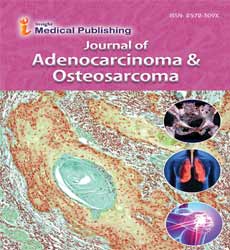Abstract
Trace Element Contents in Adenocarcinoma of Human Prostate Investigated by Energy Dispersive X-Ray Fluorescent Analysis
Background: Adenocarcinoma of prostate is an internationally important health problem of the man, particularly in developed countries. The aim of this exploratory study was to evaluate whether significant changes in the prostatic tissue levels of Zn, as an androgen dependent trace element and Br, Fe, Rb, and Sr, as androgen independent trace elements, exist in the malignantly transformed prostate. Methods and findings: Prostatic tissue levels of Br, Fe, Rb, Sr, and Zn as well as ratio of Zn content to other trace element contents were prospectively evaluated in 35 patients with adenocarcinoma and 37 healthy male inhabitants. Measurements were performed using 109 Cd radionuclide-induced energy dispersive X-ray fluorescent analysis Tissue samples were divided into two portions. One was used for morphological study while the other was intended for trace element analysis. Mean values ± standard error of means (M ± SΕΜ) for mass fraction (mg/kg on dry mass basis) of trace element in the normal tissue was: Br 38.8 ± 5.6, Fe 118 ± 8, Rb 16.3 ± 1.1, Sr 2.5 ± 0.4, and Zn 1154 ± 119, respectively. M ± SΕΜ for ratio of mass fractions were: Zn/Br 38.7 ± 6.4, Zn/Fe 11.2 ± 1.3, Zn/Rb 71.7 ± 9.0 and Zn/Sr 534 ± 83, respectively. The contents of Rb and Zn were significantly lower (approximately 2 and 8 times, respectively) and those of Br and Sr was significantly higher (2.7 and 2.2 times, respectively) in cancerous tissues than in normal tissues. Conclusions: There are great changes in trace element contents and their relationships in the malignantly transformed tissue of prostate.
Author(s):
Vladimir Zaichick and Sofia Zaichick
Abstract | Full-Text | PDF
Share this

Abstracted/Indexed in
- Google Scholar
- Secret Search Engine Labs
Open Access Journals
- Aquaculture & Veterinary Science
- Chemistry & Chemical Sciences
- Clinical Sciences
- Engineering
- General Science
- Genetics & Molecular Biology
- Health Care & Nursing
- Immunology & Microbiology
- Materials Science
- Mathematics & Physics
- Medical Sciences
- Neurology & Psychiatry
- Oncology & Cancer Science
- Pharmaceutical Sciences
